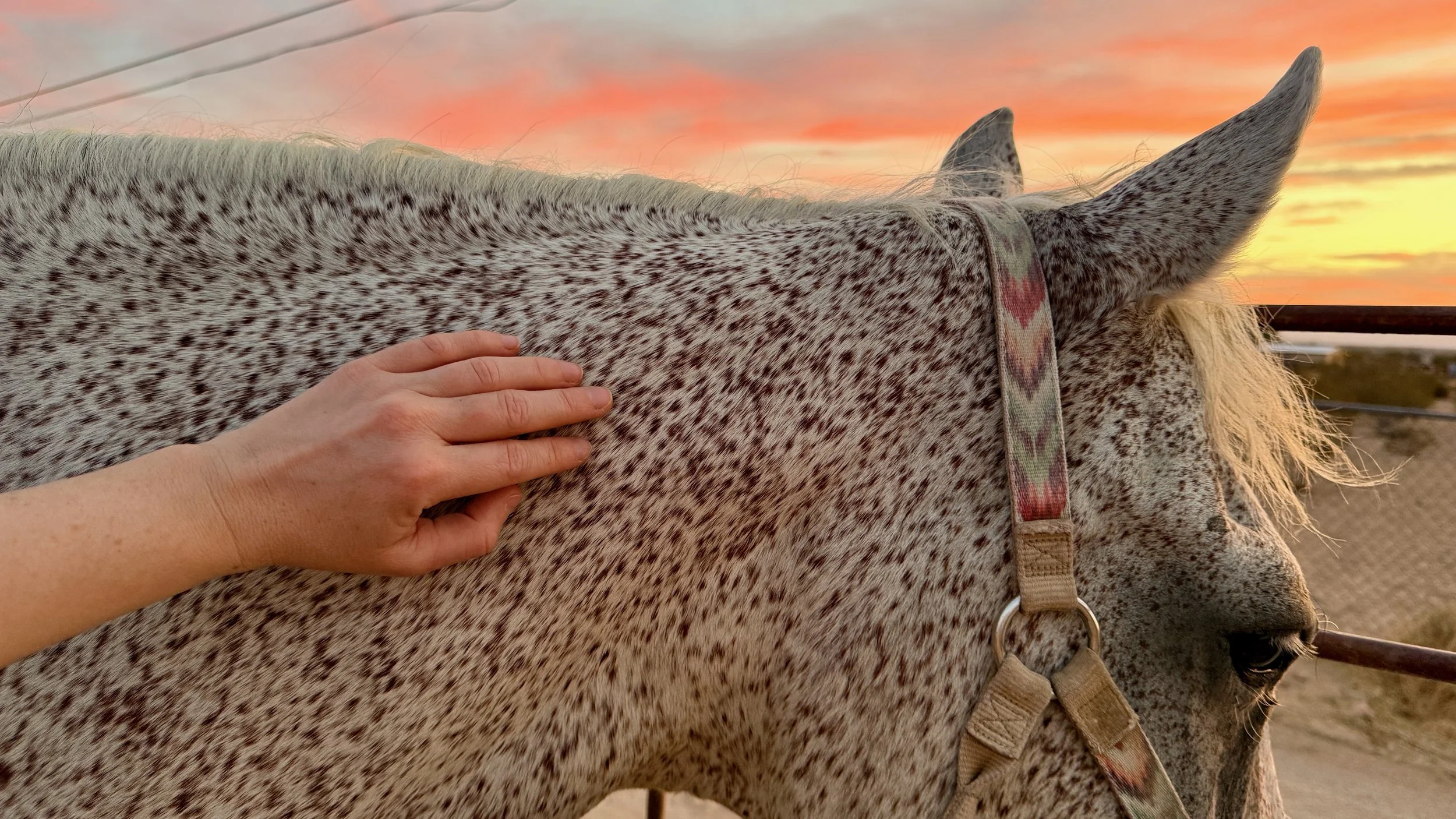Discovering the Masterson Method: The Body Scan or Bladder Meridian
Imagine stepping onto your yoga mat after a long day. All day, your attention has been outward – your work, traffic, other people, or animals. Now, for the first time, you check in with yourself. You scan your body from the top of your head to the tips of your toes, noticing tension you weren’t aware of. As you notice it, you unclench your jaw, drop your shoulders, and deepen your breath. You are tuning in, relaxing, and reconnecting with your own body.
This is exactly what we do with horses at the start of a session. Even though horses are naturally more present than we are, they are often focused outward – on safety, food, lessons, or social dynamics with other horses. By beginning with a body scan, we invite them to tune into their own bodies. We can’t simply tell them to relax their jaw or drop their shoulders, but with gentle, mindful touch, we bring awareness to areas holding tension. Just like us on the yoga mat, simply becoming aware of a clenched jaw, can help them let go.
In the Masterson Method, this body scan happens along a line called the Bladder Meridian. It’s just the first of three techniques we use in a session, all of which follow the same core principle that MM is famous for – staying under the horse’s brace response.
Some people get hung up on the term Bladder Meridian, and that’s okay – you can simply think of it as a body scan for now. In Traditional Chinese Medicine, the Bladder Meridian is a major energy pathway that runs from the front of the head, along the topline, all the way to the hind foot. In the Masterson Method we use it because it runs along the whole body. Using this line as a guide, we can systematically scan the horse for tension and begin the process of relaxation.
As practitioners, we learn to notice even the tiniest shifts in a horse’s body language – subtle signals that show they are holding tension, much like we unconsciously raise our shoulders or clench our jaws. We stay present and patient, waiting for signs of release, which might be an exhale, a drop of the head, a sigh or simply a small change in posture. These subtle cues let us know the horse is starting to let go and tune into their own body.
This first scan does more than help the horse relax – it’s also how I learn about your horse’s unique body language and personality. Some horses are stoic, giving that classic “100-yard stare”, others are busy and restless, barely pausing for a breath. The body scan helps each horse begin tuning in to themselves, and it gives me a chance to connect with them, whether it’s our first session or I already know them. It’s a gentle introduction before moving on to more advanced techniques.
To recap: the Body Scan, or Bladder Meridian, is just 1 of 3 techniques we use to help horses release tension, increase range of motion, and calm the nervous system. All three techniques work together, guided by the same overarching principle – staying below the horse’s brace response.
